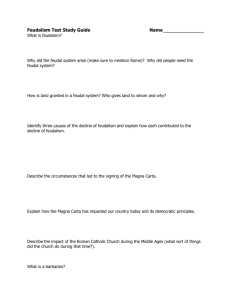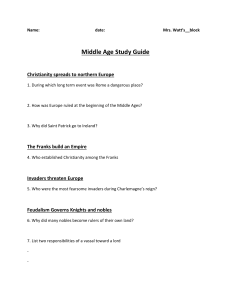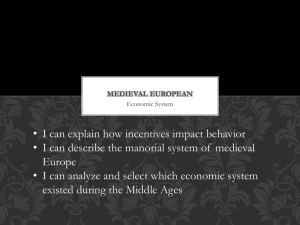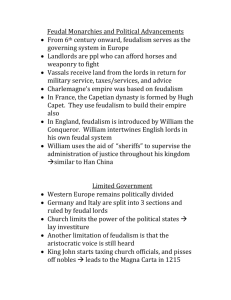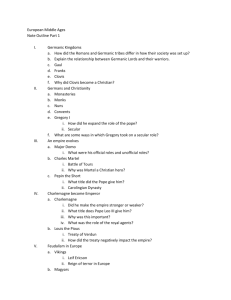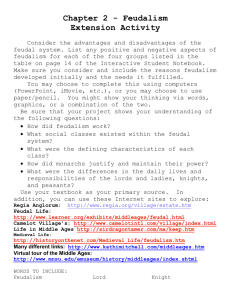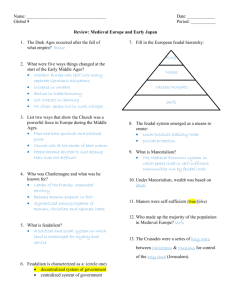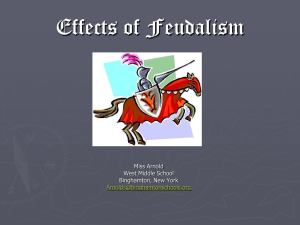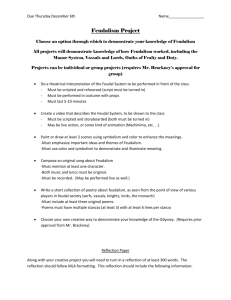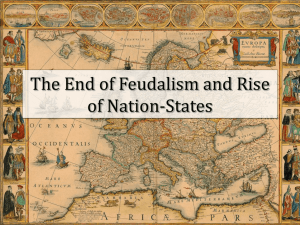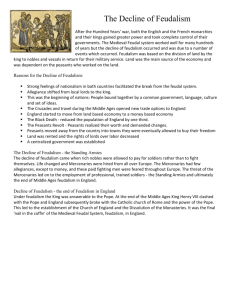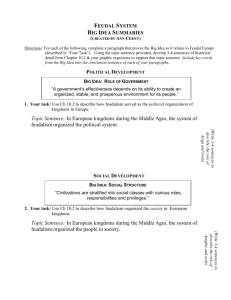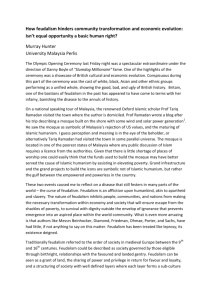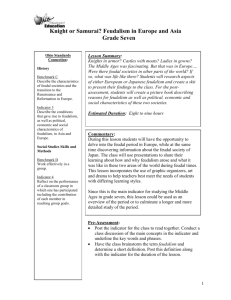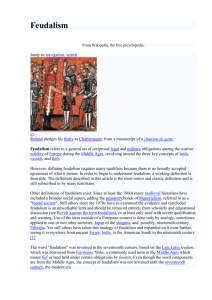LP 1 - Public Schools of Robeson County
advertisement
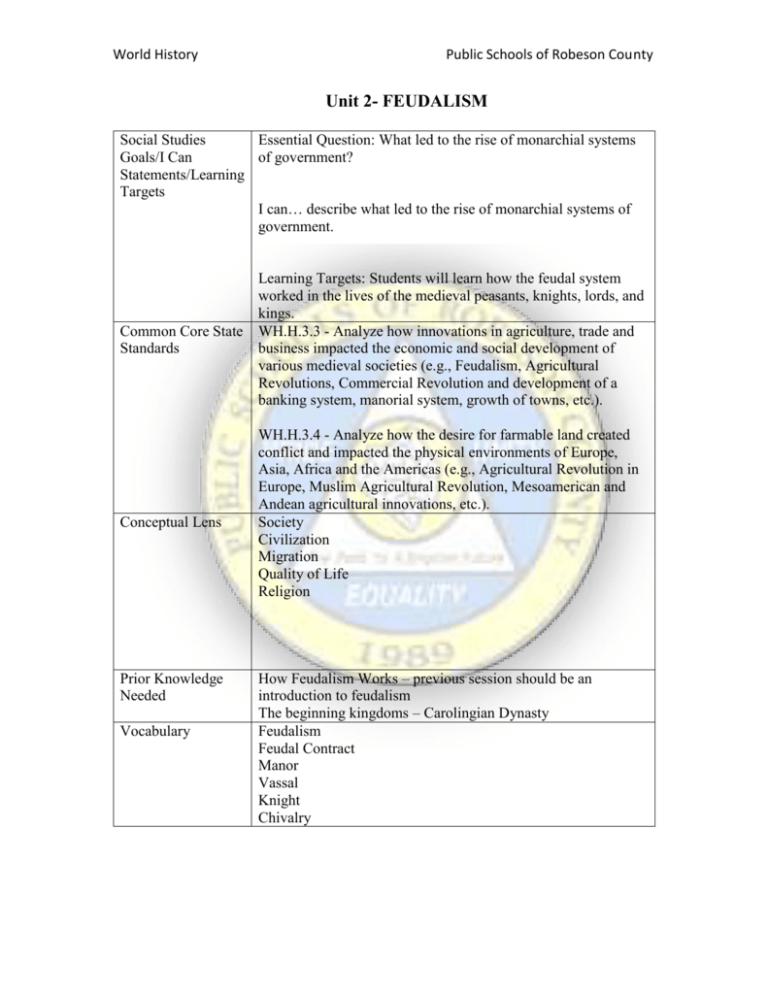
World History Public Schools of Robeson County Unit 2- FEUDALISM Social Studies Essential Question: What led to the rise of monarchial systems Goals/I Can of government? Statements/Learning Targets I can… describe what led to the rise of monarchial systems of government. Common Core State Standards Conceptual Lens Prior Knowledge Needed Vocabulary Learning Targets: Students will learn how the feudal system worked in the lives of the medieval peasants, knights, lords, and kings. WH.H.3.3 - Analyze how innovations in agriculture, trade and business impacted the economic and social development of various medieval societies (e.g., Feudalism, Agricultural Revolutions, Commercial Revolution and development of a banking system, manorial system, growth of towns, etc.). WH.H.3.4 - Analyze how the desire for farmable land created conflict and impacted the physical environments of Europe, Asia, Africa and the Americas (e.g., Agricultural Revolution in Europe, Muslim Agricultural Revolution, Mesoamerican and Andean agricultural innovations, etc.). Society Civilization Migration Quality of Life Religion How Feudalism Works – previous session should be an introduction to feudalism The beginning kingdoms – Carolingian Dynasty Feudalism Feudal Contract Manor Vassal Knight Chivalry World History Public Schools of Robeson County Tasks For Lessons Engage—What tasks will “hook” students and uncover what they know and think about the concept? Explore/Explain— What tasks will encourage students to observe, question, and investigate the concepts and explain concepts in their own words? Elaborate—What experimental inquiry, investigative projects, problem solving, and decision-making tasks will help students apply their new labels, definitions, explanations, and skills? Evaluate—What formative assessments will ensure that learning is occurring? Differentiation— What tasks will challenge students and support those Journal Entry: Have students recall the definition of feudalism. Have a diagram drawn on the board asking students to recall the hierarchy of who is in charge of Feudalism. Start explaining the directions for the next process. Students are to be given (at random) different positions of the hierarchy positions in order to play a “game.” Have directions printed up and a small script of what each group is supposed to do. The following positions are: King – 1, Lords – 3 or 4, Knights - #’s vary, Serfs - #’s vary --- realize that numbers for each, other than king, can change due to class size. The purpose of this role-play is for students to realize how important the King was to the lords and vice versa, etc. Make sure each role is played appropriately. If King is displaying too much power, he can be dethroned by “divine intervention”. At the end of the role-play, have students have a battle with paper balls that they can throw. Each lord is to have a manor set up to help protect his/her people. In between your steps have students keep a journal about their experiences. Come back after the cleanup and have a discussion as to how each person was to play his/her role. Did your class do it successfully? How can they relate what they learned to how life was like prior to nations forming? Have students reiterate what the definition and purpose of what feudalism and feudal contracts are. This activity allows the entire class to be learn about feudalism kinetically then allows students to reflect off of what they learned and experienced and keep a running journal. World History who need additional help? Public Schools of Robeson County

